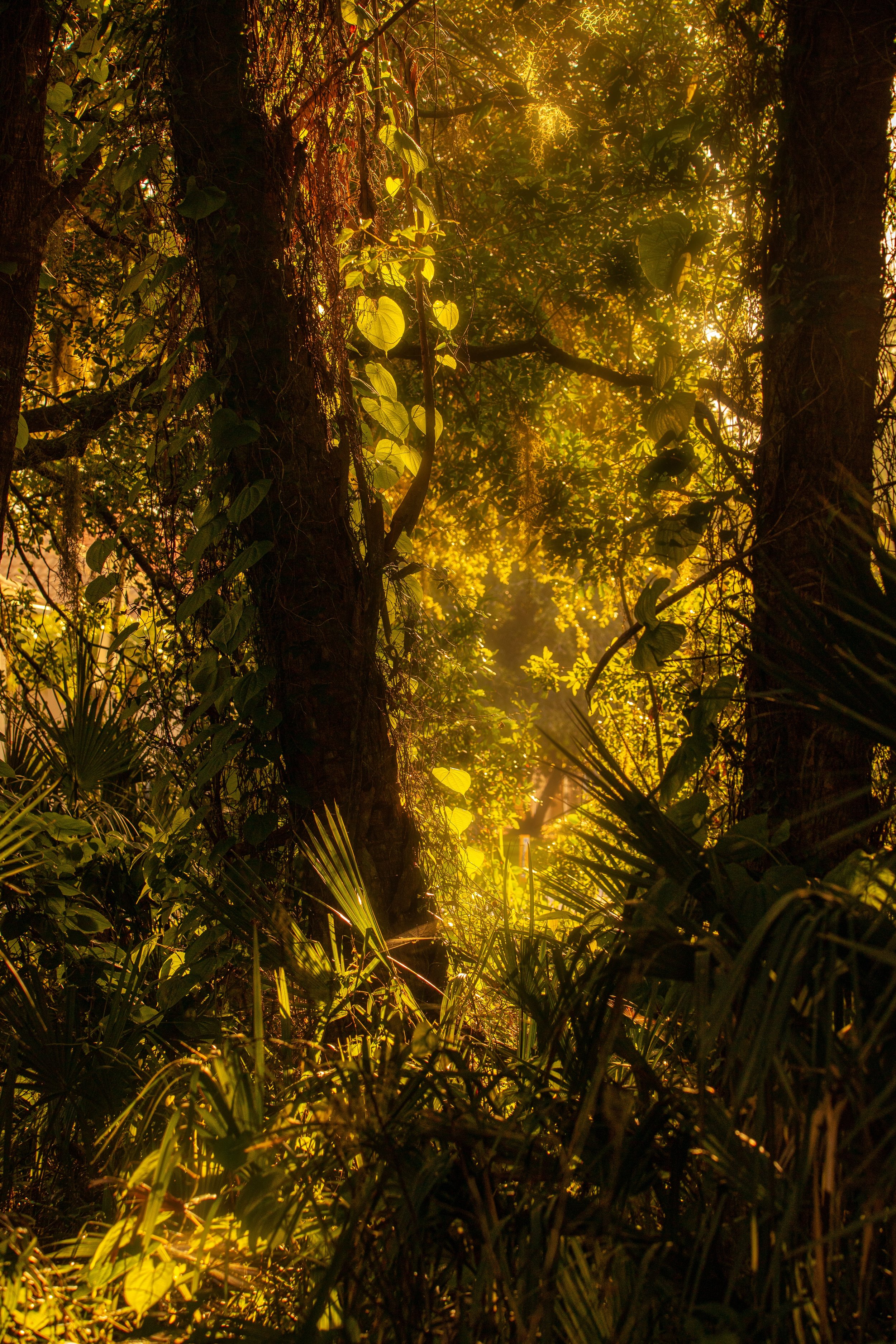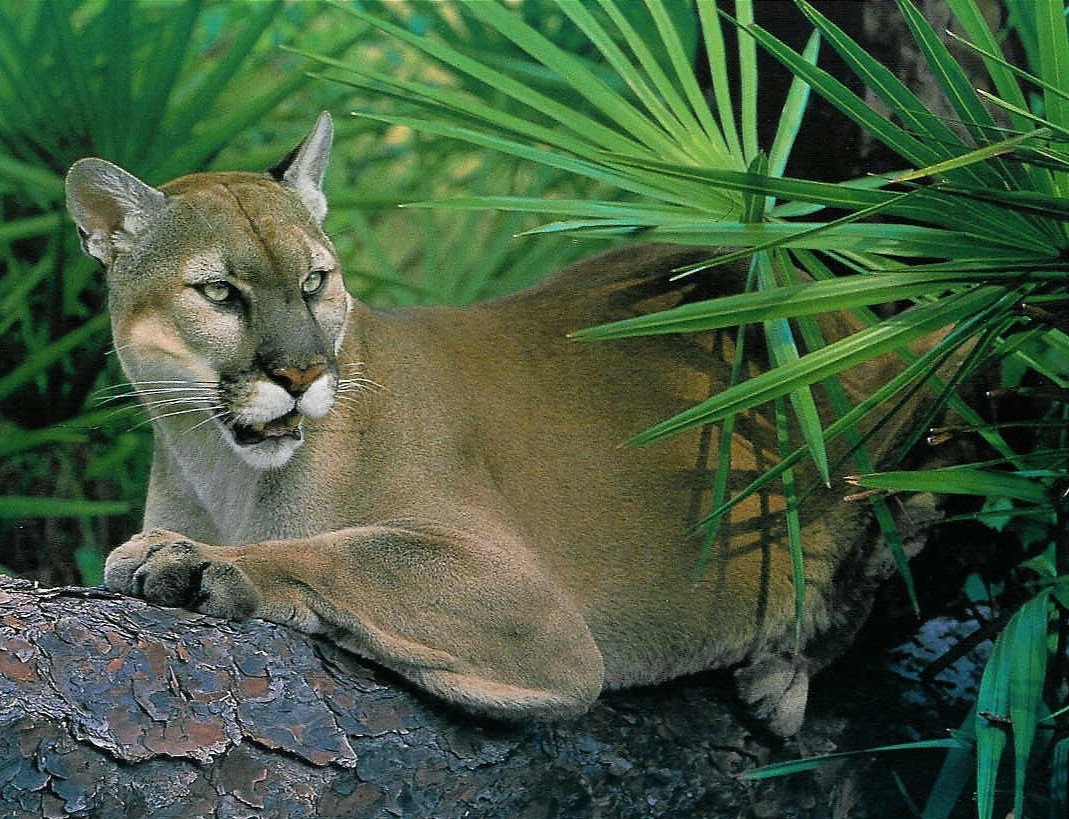
Hardwood Hammock
A Florida hardwood hammock is a unique type of forest ecosystem that is found in south Florida, particularly in the Everglades region and the Florida Keys. It is characterized by the presence of tall, broad-leaved trees, rich biodiversity, and adaptations to the region's subtropical climate.
Underneath the canopy, there is a diverse community of plant species, including shrubs, vines, and herbaceous plants. The dense canopy and diverse understory create a microclimate that is cooler and more humid than the surrounding landscape, which provides habitat for a variety of wildlife.
Florida hardwood hammocks are threatened by habitat loss, degradation, and fragmentation, as well as by invasive species and climate change. Conservation efforts are important to protect and preserve these important ecosystems, as they provide many benefits to both humans and wildlife, such as carbon sequestration, air and water purification, and recreational opportunities.
Canopy and Trees
The hallmark of a Florida hardwood hammock is its canopy of mature trees. These trees form a dense and closed canopy layer that provides shade and protection for the understory vegetation. Common tree species found in hardwood hammocks include:
Live Oak (Quercus virginiana): These iconic trees have broad, evergreen leaves and are often draped with Spanish moss, lending a mystical quality to the hammock.
Gumbo Limbo (Bursera simaruba): Known as the "tourist tree" due to its reddish peeling bark, this tree is well-adapted to the hammock environment.
Strangler Fig (Ficus aurea): These trees often start as epiphytes on other trees and send down aerial roots that eventually surround and "strangle" their host, creating a hollow trunk.
Cabbage Palm (Sabal palmetto): Florida's state tree, this palm can often be found in the understory or emerging through the canopy.
Understory and Shrubs
The understory and shrub layer of a Florida hardwood hammock habitat is a critical component of its biodiversity and ecological functioning. This layer consists of smaller trees, shrubs, and other plant species that grow beneath the canopy of larger trees. These plants have adapted to the relatively lower light conditions found beneath the dense tree canopy.
Wild Coffee (Psychotria nervosa): This shade-tolerant shrub is a common sight in the understory of hardwood hammocks. It features glossy, dark green leaves and produces small clusters of white, fragrant flowers. The flowers are followed by bright red berries that attract birds and other wildlife, contributing to the ecosystem's food web.
Poisonwood (Metopium toxiferum): Despite its toxic nature, poisonwood plays a role in the hardwood hammock ecosystem. It grows as a small tree or shrub and is recognized by its compound leaves and reddish stems. The leaves and bark contain chemicals that can cause skin irritations, making it a plant to be avoided by humans. However, some insects have evolved to feed on poisonwood, illustrating the complex interactions within the habitat.
Marlberry (Ardisia escallonoides): This evergreen shrub produces clusters of small white or pinkish flowers followed by dark berries. Birds and other animals consume the berries, helping to disperse the plant's seeds. Marlberry contributes to the habitat's biodiversity by providing food sources for various wildlife species.
Wild Tamarind (Lysiloma latisiliquum): This tree or shrub has feathery compound leaves and produces elongated seed pods that twist open to release their seeds. Wild tamarind is nitrogen-fixing, meaning it forms symbiotic relationships with bacteria that convert atmospheric nitrogen into a form that plants can use, enriching the soil.
Cocoplum (Chrysobalanus icaco): Cocoplum is a low-growing shrub with glossy, rounded leaves. It produces small, edible fruits that are enjoyed by wildlife. The plant's dense growth habit provides cover for various animals, contributing to the habitat's overall structure.
Wax Myrtle (Myrica cerifera): While more commonly associated with coastal habitats, wax myrtle can also be found in the understory of hardwood hammocks. It has aromatic leaves and produces small, waxy berries that provide food for birds and other wildlife.
Seagrape (Coccoloba uvifera): In hammocks located near coastal areas, seagrape may be present in the understory. It's a salt-tolerant shrub or small tree with large, round leaves that resemble grape leaves. Seagrape produces clusters of grape-like fruit that turn from green to red when ripe, providing food for wildlife.
These understory plants and shrubs contribute to the overall diversity and complexity of the Florida hardwood hammock habitat. They provide food, shelter, and nesting sites for various animals and insects, forming intricate ecological relationships within the ecosystem.
Epiphytes and Vines
Epiphytes and vines are fascinating components of the Florida hardwood hammock habitat that contribute to its biodiversity and unique ecological dynamics. Here's a more detailed description of epiphytes and vines in this habitat:
Epiphytes are plants that grow on other plants, such as trees, without relying on the host plant for nutrients. Instead, they obtain water and nutrients from the air, rain, and decaying organic matter that accumulates around them. Epiphytes play a crucial role in the ecosystem by creating microhabitats for various organisms and contributing to nutrient cycling.
Spanish Moss (Tillandsia usneoides): Perhaps one of the most iconic epiphytes in Florida hardwood hammocks, Spanish moss is not a true moss but a bromeliad. It drapes elegantly from tree branches, creating a mystical and ethereal appearance. Spanish moss captures moisture and nutrients from the air, and various animals, including insects and small birds, use it for nesting material and cover.
Orchids: Several species of orchids can be found as epiphytes in hardwood hammocks. These intricate and often fragrant flowers come in various shapes and sizes, and they rely on specialized relationships with pollinators for reproduction. Orchids contribute to the overall beauty and diversity of the habitat.
Bromeliads: Apart from Spanish moss, various other bromeliad species can be found growing as epiphytes in hardwood hammocks. These plants form rosettes of leaves that collect water, creating small ecosystems that support a range of organisms, from insects to frogs.
Vines are plants that climb and grow along other plants, using them for support as they reach toward the light. While some vines can become invasive and harmful to their host trees, others play important roles in the ecosystem by providing food and cover for wildlife.
Native Grape (Vitis cinerea): This vine produces clusters of small, wild grapes that are enjoyed by birds and mammals. The vine climbs through the understory and canopy, utilizing trees for support.
Greenbrier (Smilax spp.): Greenbrier vines are common in Florida hardwood hammocks. They have tough, spiny stems and produce small flowers and berries. They provide cover for small animals and offer a source of food for wildlife.
Both epiphytes and vines contribute to the vertical layering of the habitat, utilizing available space and resources in creative ways. They enhance the habitat's complexity, provide resources for animals, and play a role in nutrient cycling within the ecosystem.
Endangered Species Living in Hardwood Hammocks
Miami Tiger Beetle
Florida Panther
West Indian Woodpecker
Bartram's Scrub-Hairstreak photo by Cameron Brooks
Crenulate Leadplant (Amorpha crenulata)
Florida Torreya
(Torreya taxifolia)
Key Largo Woodrat
Red-cockaded Woodpecker
Florida State Parks with Hardwood Hammock Habitats
Highlands Hammock State Park - Located in Sebring, FL. A classic Florida hardwood hammock: a large, old‑growth stand of live oaks on deep, humus‑rich soils, protected since the 1930s.
Dagny Johnson Key Largo Hammock Botanical State Park - Located in Key Largo, FL. The tropical variant of the hardwood hammock, found only in the Keys.
Jonathan Dickinson State Park- Located in Home Sound, FL. Offers the largest contiguous hardwood‑hammock segment within a multi‑habitat landscape, allowing visitors to experience the hammock in the context of surrounding wetlands, pine flatwoods, and mangroves. Ideal for longer hikes or overnight backpacking that immerses you in the hammock interior.
Curry Hammock State Park - Located in Marathon, FL. A coastal hardwood‑hammock that blends seamlessly with rockland and mangrove habitats, giving a taste of how hammocks transition toward the shoreline. Great for short day trips, birdwatching, and sunset vistas.
There are many hardwood hammock habitats in Florida’s state parks but the parks listed are the best examples of the different types of hardwood hammocks.














